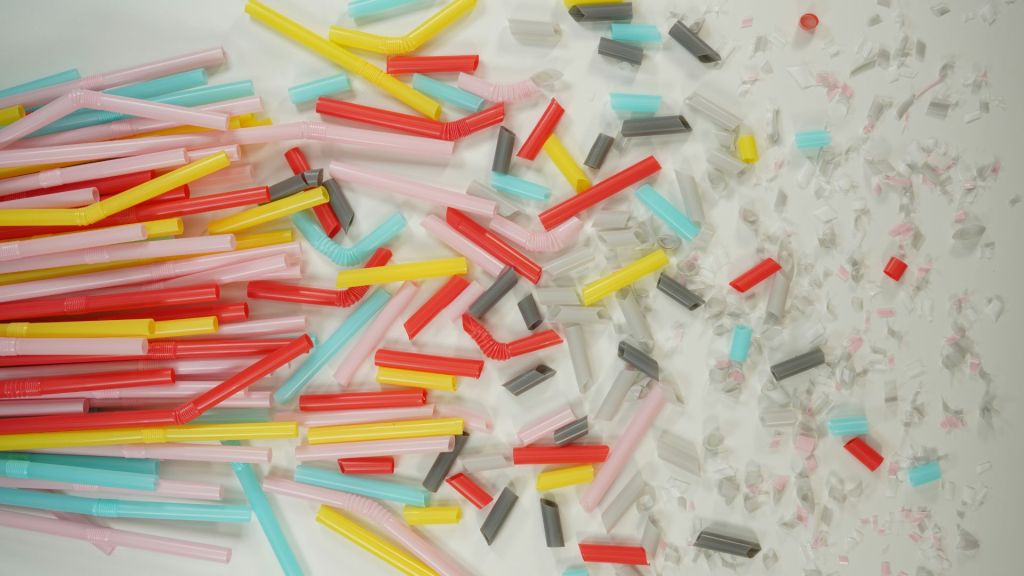By Aria Brent
AFRO Staff Writer
abrent@afro.com
The ongoing discovery of microplastics is raising concerns for lots of people. There are questions about how these microscopic pieces of plastic affect the body, where they come from and how they get into our bloodstreams. Reports have noted that microplastics can affect your health and in some cases result in heart attack, stroke or death. And although this is true, there isn’t research or evidence to show how likely this is or if it’s enough of an issue to be addressed by agencies like the Food and Drug Administration (FDA) or the Center for Disease Control (CDC).

CREDIT: Image courtesy of Unsplash.com/ FlyD
The AFRO spoke with a series of experts who explained how microplastics get into our bloodstreams and how dangerous they actually are.
“We did not know until recently that micro and nanoplastics could get into the bloodstream. A recent clinical study in the New England Journal of Medicine showed that micro and nanoplastics can get into the bloodstream and were found to be present in clumps that had accumulated in the carotid arteries of patients,’ said Loren Wold, Ph.D, a cardiovascular physiology professor at the Ohio State University Wexner Medical Center. “We now know that micro and nanoplastics can be consumed either through ingestion, through breathing them in or through your skin. They can actually get into your circulation and therefore affect anywhere within your body.”
The experienced healthcare professional noted how common materials like nylon and polyester are one way that microplastics get into the bloodstream. However literal ingestion from eating and drinking out of plastic containers is another way that microplastics find their way into our bodies. Paul Takhistov, Ph.D, an associate professor of food engineering at the department of food science at Rutgers University detailed how this process works.
“The source of micro and nanoplastics is not just from plastic bottles. The polymers are an engineered material and are subject to aging.When they age they lose a little bit of elasticity and microcracks develop,” he explained. “Starting from the farm food collected in plastic crates or boxes, then they are exposed to the machinery and only a few materials are allowed to be in contact with the food for this highly regulated industry. They do everything that’s possible to make it safe, but you cannot avoid production and the final stage of the packaging. Recently it was found that even the safest polymeric materials can generate some micro particles.”
It was noted by both Wold and Takhistov that microplastics are also in the air, making direct consumption a lot easier. Wold explained that there isn’t any research to back up the claim, but it’s safe to infer that areas dealing with higher rates of pollution are also more likely to be affected by microplastics.
“The studies have not looked at various demographics and that’s something that absolutely must be done. We know that those who live in inner cities and near freeways have been tied to having a lower socioeconomic status and higher rates of exposure to air pollution,” Wold said. “And although we don’t have that data with micro and nanoplastics we can infer that because they are really small particles in the air similar to air pollution they would have similar outcomes. Right now it’s simply correlative and those studies must be done so that we can begin to understand the true effects of microplastics.”
Takhistov went on to explain how the miniature pieces of plastic affect agriculture. Noting that due to them being in the air options like urban gardening aren’t much of an alternative when trying to avoid them being in your produce.
“Urban gardening has become very popular especially among communities that have limited access to fresh produce but urban gardening can potentially be hazardous. Even if you put in nice soil, organic fertilizer and use food scraps for compost development– the air and water system is saturated with plastics,” said Takhistov. “Therefore, if it’s grown as organic it doesn’t mean that it’s completely safe. Use proper handling, wash it and cook it thoroughly. This will significantly reduce the risk of exposure.”
With some pieces of plastic not being visible to the naked eye, it’s hard to know when you’re at risk of consuming microplastics.When it’s in the air, our water systems and food— how do people avoid them? The simple answer is you don’t.
“There is great public concern, but there is no strong scientific evidence that this might have direct impact,” said Takhistov.
The issue is inevitable and apparently very common as well. Wold noted that most people probably have microplastics in their bloodstream already, however he also explained that our bodies are designed to naturally get rid of them.
“I can almost guarantee all of us have micro and nanoplastics in some fashion within our circulation. Over time not only do these micro and nanoplastics get into your bloodstream, but they’re also going to be removed, because your body has a way of noticing foreign particles and getting rid of them,” Wold said.
Both experts suggested using water bottles and cooking utensils made of metal or other materials to lessen the likeliness of you directly ingesting microplastics but at this time they’re generally unavoidable.
Additionally, as research is still being done on this matter the true risk of it is ever-developing. As much of a concern as this is for some people, it was noted by Takhistov that microplastics isn’t something that can be regulated therefore, policy hasn’t been made for it yet.
“To put something into law and to issue some regulation, you need to have the ability to enforce it. You need to have the methodology and know how to control it, how to detect it and how to quantify it. And in this case, you will need to certify the product is good and that isn’t always possible.”
The post Experts discuss how microplastics get into our systems and the effects appeared first on AFRO American Newspapers.









